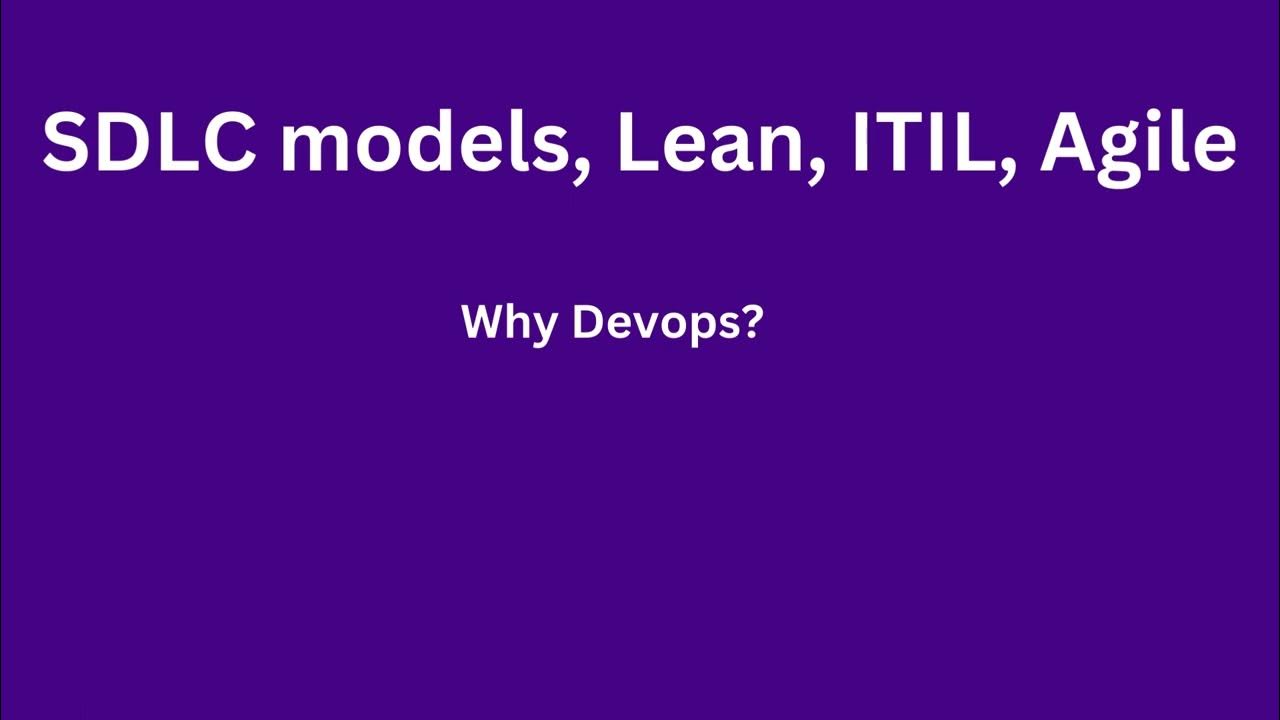28. OCR A Level (H046-H446) SLR6 - 1.2 Development methodologies part 2
Summary
TLDRThe video explores various software development methodologies, detailing their benefits and drawbacks. It covers the Waterfall Model, emphasizing its simplicity and clear responsibilities but noting its unsuitability for complex projects. The Rapid Application Development (RAD) model is praised for its flexibility and user involvement, though it may struggle with large-scale projects. The Spiral Model focuses on risk management, ideal for high-risk projects but requires specialized skills. Finally, Agile and Extreme Programming prioritize high-quality code through collaboration, although they necessitate strong client involvement. Understanding these methodologies helps identify the best approach for specific development needs.
Takeaways
- 😀 The video discusses the merits and drawbacks of various software development methodologies.
- 🤔 Understanding the benefits and disadvantages of each methodology is crucial for effective project management.
- 📊 The Waterfall model is straightforward and easy to manage, but it poses high risks due to limited user involvement until project completion.
- 🔄 Rapid Application Development (RAD) allows for flexibility in requirements, facilitating iterative feedback and improving usability.
- ⚠️ The Spiral model prioritizes risk management, making it suitable for projects with high uncertainty, but requires specialized skills that can be costly.
- 💻 Agile and Extreme Programming (XP) focus on producing high-quality code and fostering collaboration within development teams.
- 📅 Waterfall is best suited for large-scale projects with well-understood requirements and low risks.
- 👥 RAD is ideal for projects where initial requirements are unclear and can evolve through user feedback.
- 🔍 The Spiral model is beneficial for large projects involving significant risk and user uncertainty.
- 🔗 Agile and XP require close collaboration among programmers, which can be challenging in geographically distributed teams.
Q & A
What are the main software development methodologies introduced in the video?
-The video discusses five main software development methodologies: Waterfall, Rapid Application Development (RAD), Spiral Model, Agile, and Extreme Programming.
What is a significant drawback of the Waterfall model?
-A significant drawback of the Waterfall model is that the user only sees the finished product near the end of the project, which can lead to misunderstandings of requirements that are difficult to fix later.
In what situations is the Waterfall model considered suitable?
-The Waterfall model is suitable for large-scale development projects where requirements are well understood and carry little risk.
What does the Rapid Application Development (RAD) model focus on?
-The RAD model focuses on continuous feedback from clients and allows for flexibility in gathering requirements, making it suitable for projects where initial requirements are not fully clear.
What is a key advantage of the Spiral model?
-The Spiral model places a strong emphasis on risk management, making it ideal for projects with a high level of risk or uncertainty.
What are the potential downsides of using the Spiral model?
-The potential downsides include the need for specialized skills in risk analysis and project management, which can be expensive and may impact the project negatively if not executed well.
How do Agile and Extreme Programming methodologies enhance code quality?
-Agile and Extreme Programming methodologies emphasize collaboration and respect among team members, promoting a productive environment that leads to high-quality code.
What challenges can arise when using Agile and Extreme Programming methodologies?
-Challenges can arise if the development team is geographically distributed, as these methodologies require close collaboration among team members.
What type of projects are best suited for Agile and Extreme Programming?
-Projects that emphasize the quality of the finished code and require regular interaction with clients are best suited for Agile and Extreme Programming methodologies.
What should exam candidates be prepared to discuss regarding these methodologies?
-Exam candidates should be able to discuss the benefits, drawbacks, similarities, and differences of each methodology, as well as identify which model is most suitable for specific situations.
Outlines

Esta sección está disponible solo para usuarios con suscripción. Por favor, mejora tu plan para acceder a esta parte.
Mejorar ahoraMindmap

Esta sección está disponible solo para usuarios con suscripción. Por favor, mejora tu plan para acceder a esta parte.
Mejorar ahoraKeywords

Esta sección está disponible solo para usuarios con suscripción. Por favor, mejora tu plan para acceder a esta parte.
Mejorar ahoraHighlights

Esta sección está disponible solo para usuarios con suscripción. Por favor, mejora tu plan para acceder a esta parte.
Mejorar ahoraTranscripts

Esta sección está disponible solo para usuarios con suscripción. Por favor, mejora tu plan para acceder a esta parte.
Mejorar ahoraVer Más Videos Relacionados

Lecture 07: Life Cycle Model (Contd.)

27. OCR A Level (H046-H446) SLR6 - 1.2 Development methodologies part 1

DevOps Tutorial: SDLC models, Lean, ITIL, Agile & Why Devops?

Pengantar Rekayasa Perangkat Lunak

Agile vs Waterfall Methodology | Difference between Agile and Waterfall | Intellipaat

Scrum Master é um Inútil (não é só sobre isso)
5.0 / 5 (0 votes)
